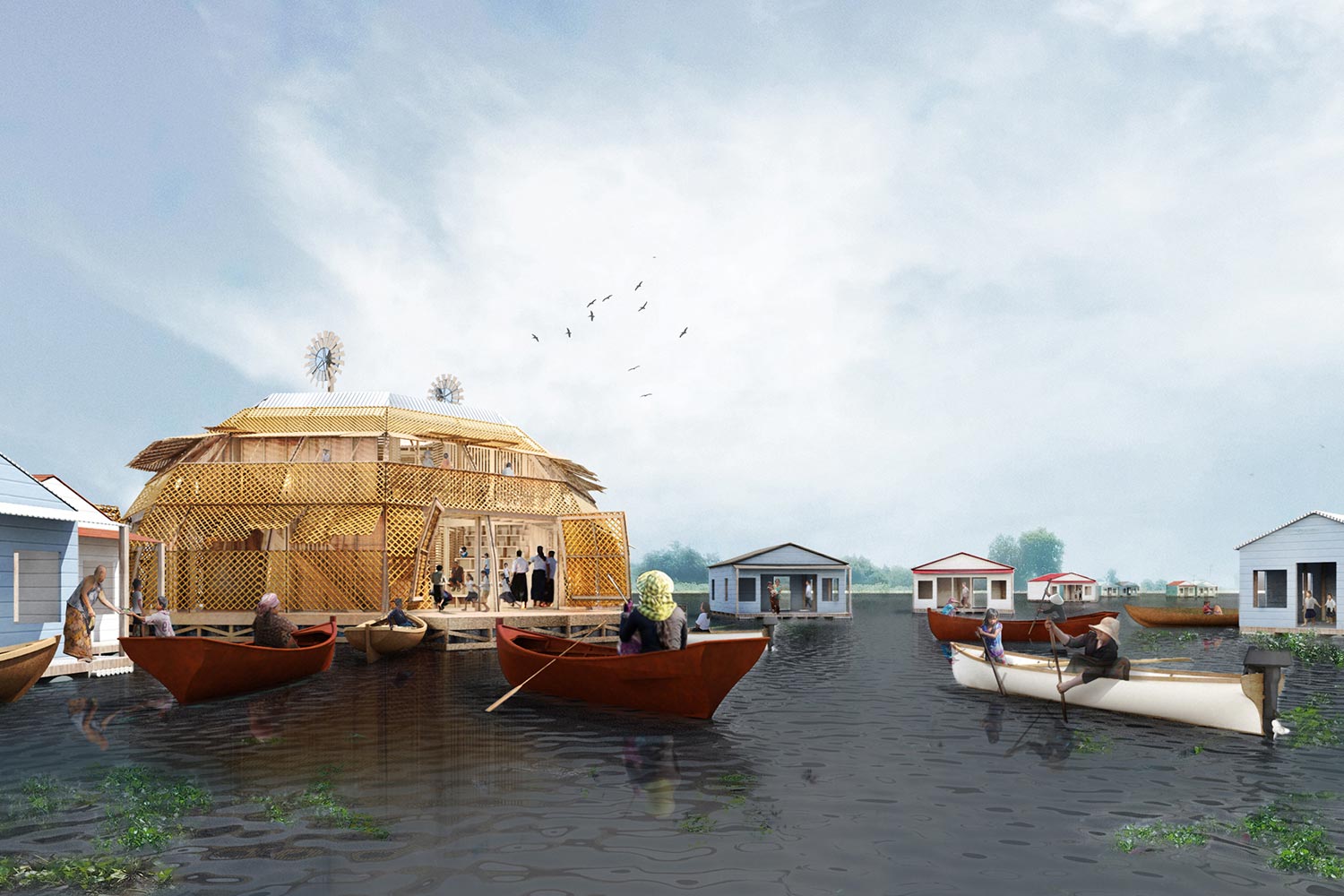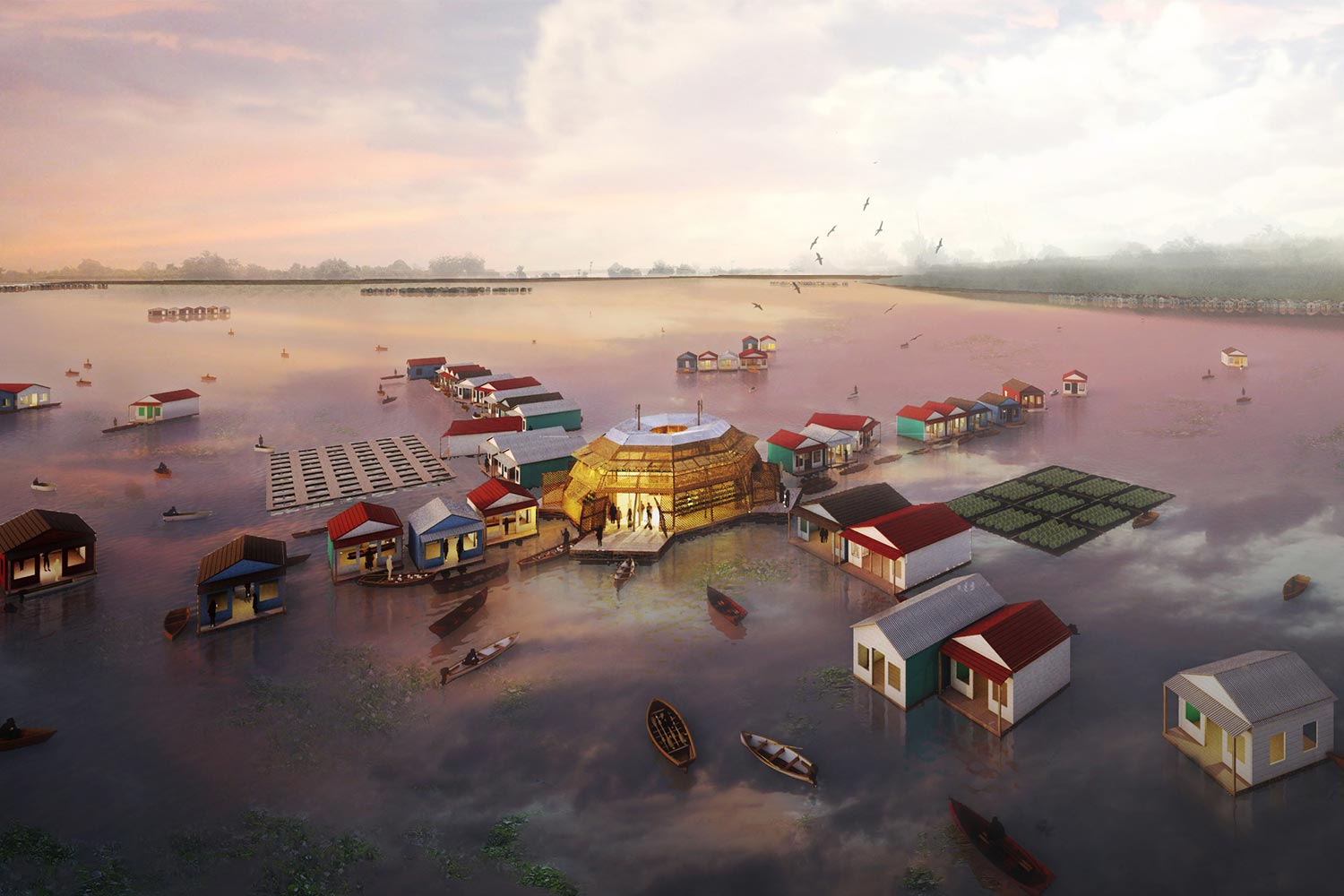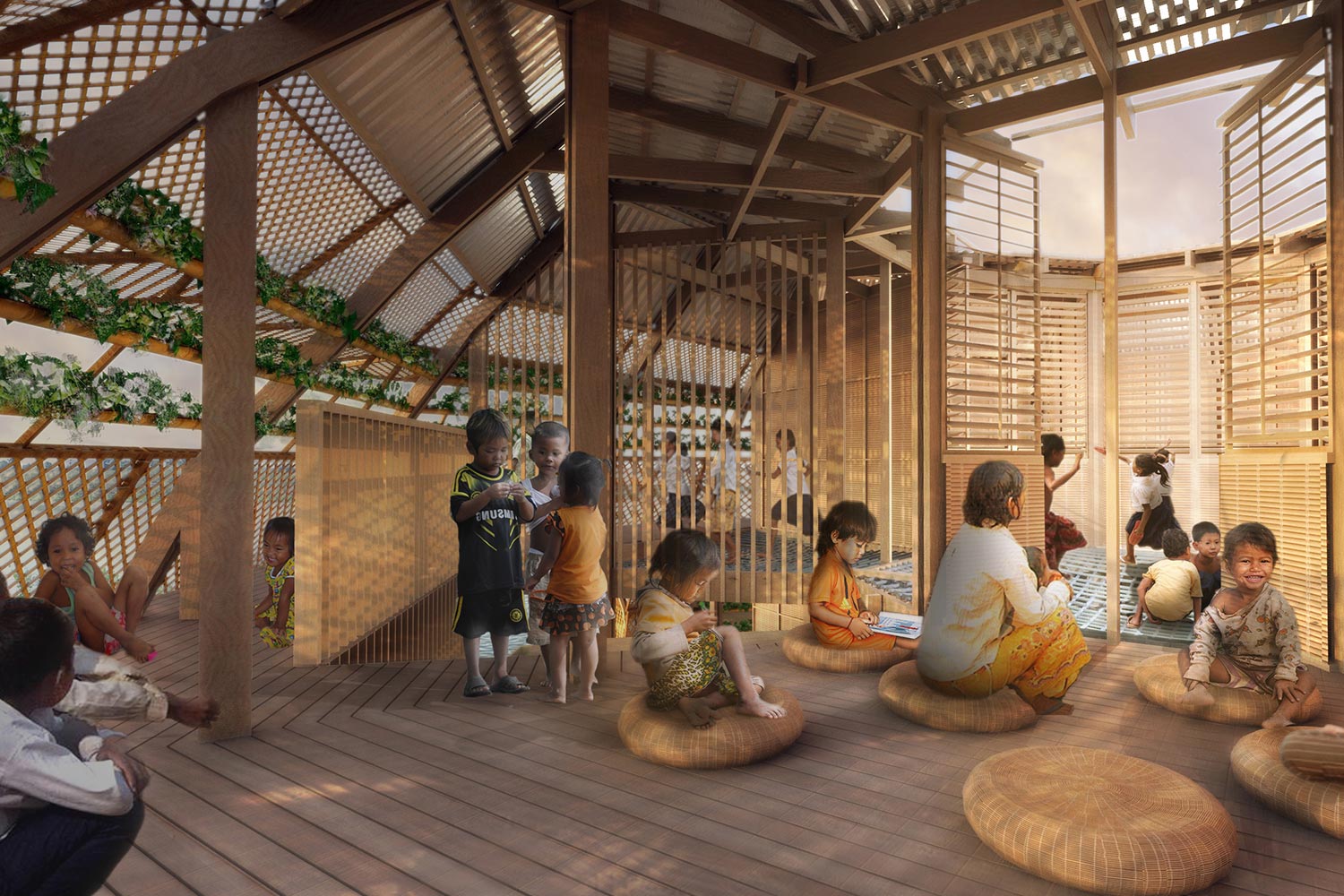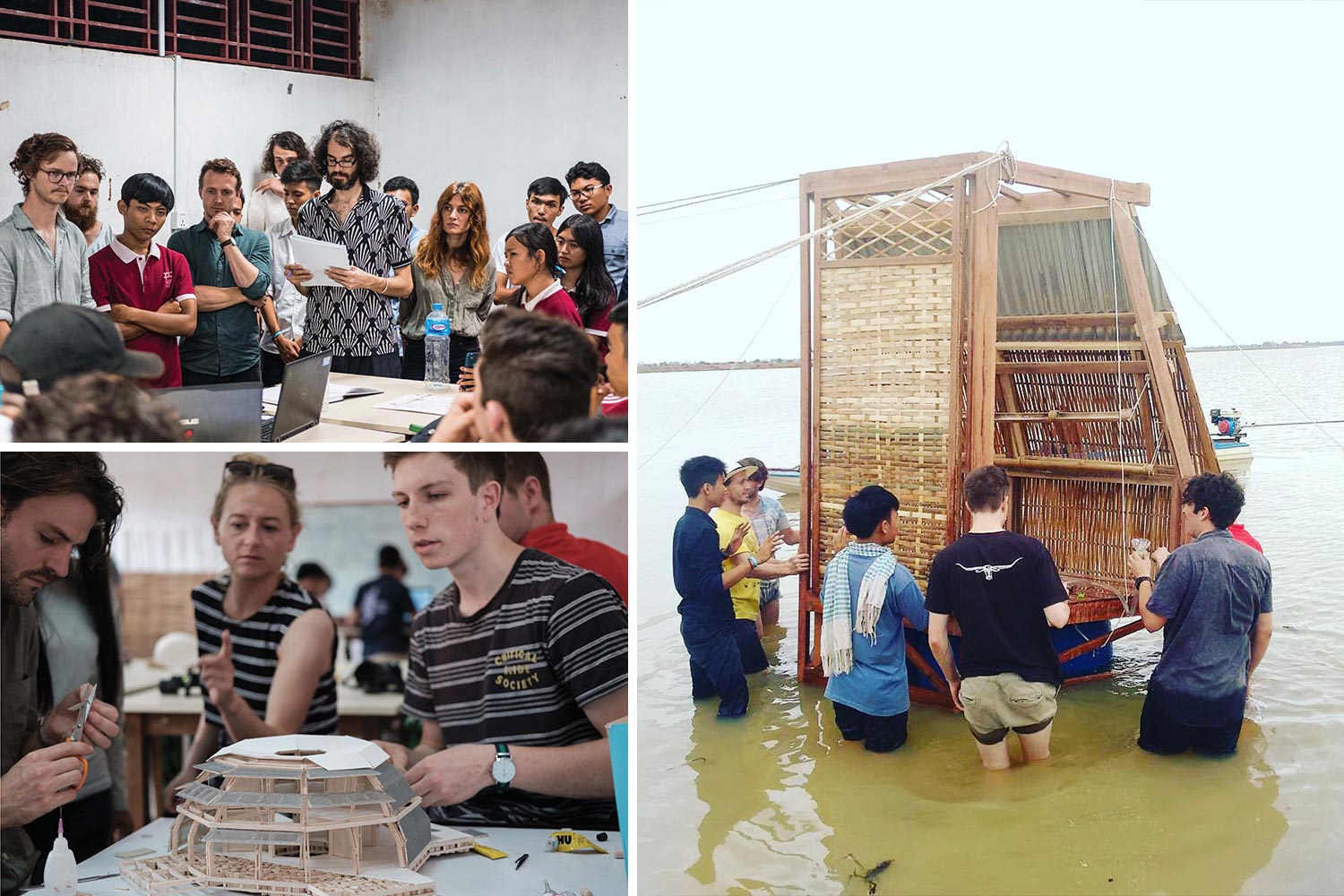Mobile Lotus
WY-TO
Tonlé Sap Lake in Cambodia is a UNESCO World Biosphere Reserve. Roughly translated to ‘The Great Lake’, it is Southeast Asia’s largest freshwater lake. Farmers and fisherfolk share this large common water source, catching fish and planting rice to make a living. The increasing use of fertilisers and pesticides to meet the rising demand for food cultivation has drastically impacted the marine life of the historically significant lake. As a result, fresh fish as a food source is declining and the water is becoming polluted with hypoxia (low oxygen levels). This hypoxic water is responsible for rising health issues for people living in and around the lake.
In response, WY-TO has designed the Mobile Lotus to provide holistic solutions to the challenges that are faced by the lake’s floating communities. Mobile Lotus is a floating platform that supports local infrastructure, enhancing access to regular healthcare and health education for the lake’s residents. Being mobile, it reaches remote floating villages to treat and inform them about common illnesses, sanitation and remedies for supporting the ecosystem. The project aims to set a benchmark for sustainability by highlighting the unique biodiversity of the Tonlé Sap Lake and the environmental challenges it currently faces.
Level one of the Mobile Lotus houses a women’s clinic and a small men’s clinic. The design includes a central atrium with seating for community gathering and education seminars. It also accommodates a medical dispensary, ample waiting space for families of patients, and sustainable anaerobic toilet systems that fertilise a floating garden. Level two houses a children’s health clinic, with educational play spaces and specialised treatment areas. A child-friendly design offers a sense of adventure through the use of bouncy nets and crawl spaces. It encourages local community engagement and allows clinical staff to monitor the ongoing nutrition and health of the floating village children by gathering data on a more regular basis.
In addition to bio-gas and solar/wind energy storage systems, the low tech, smart facade of the Mobile Lotus is one of its most important features. Research has been conducted with structural and environmental engineers into how the facade can provide shelter and ventilation while contributing to the microsystem of the Mobile Lotus. Water is filtered and the facade allows vegetation to grow in it.
WY-TO and its ongoing collaborators are committed to work together to develop a unified and culturally appropriate platform that supports the UNESCO Biosphere Reserve and its people. In November 2017, WY-TO organised a research workshop in Phnom Penh with 20 students from institutions in three countries: The Royal University of Fine Arts in Cambodia, Glasgow School of Art in Singapore, and the University of South Australia. It culminated with the construction of a module of the Mobile Lotus using locally available materials and traditional techniques, and the successful floating of the module on Tonlé Sap Lake. Another workshop is being planned to take the development of the Mobile Lotus a step further.
Photography: UniSA, GSA, RUFA and WY-TO (for renders)




